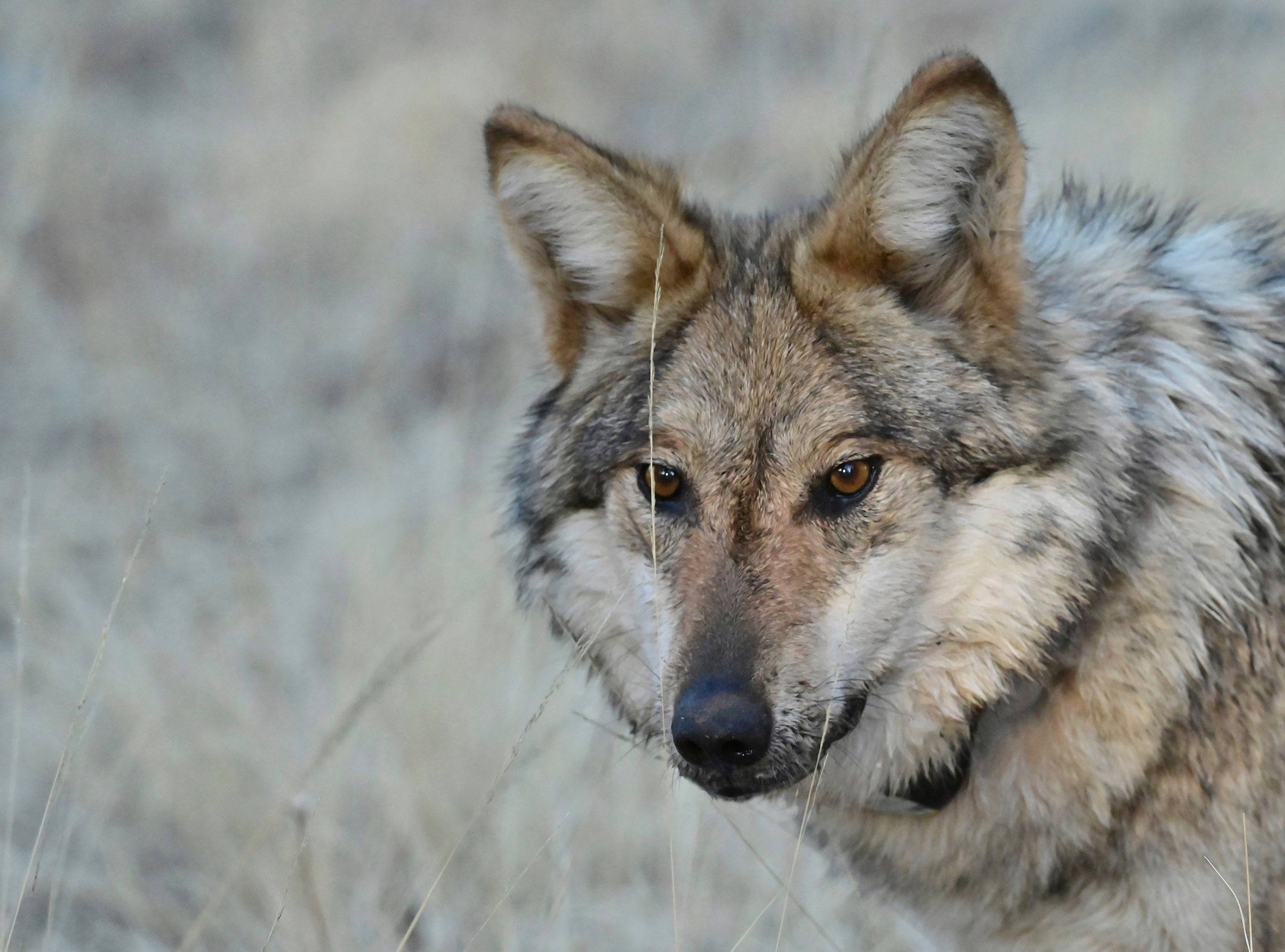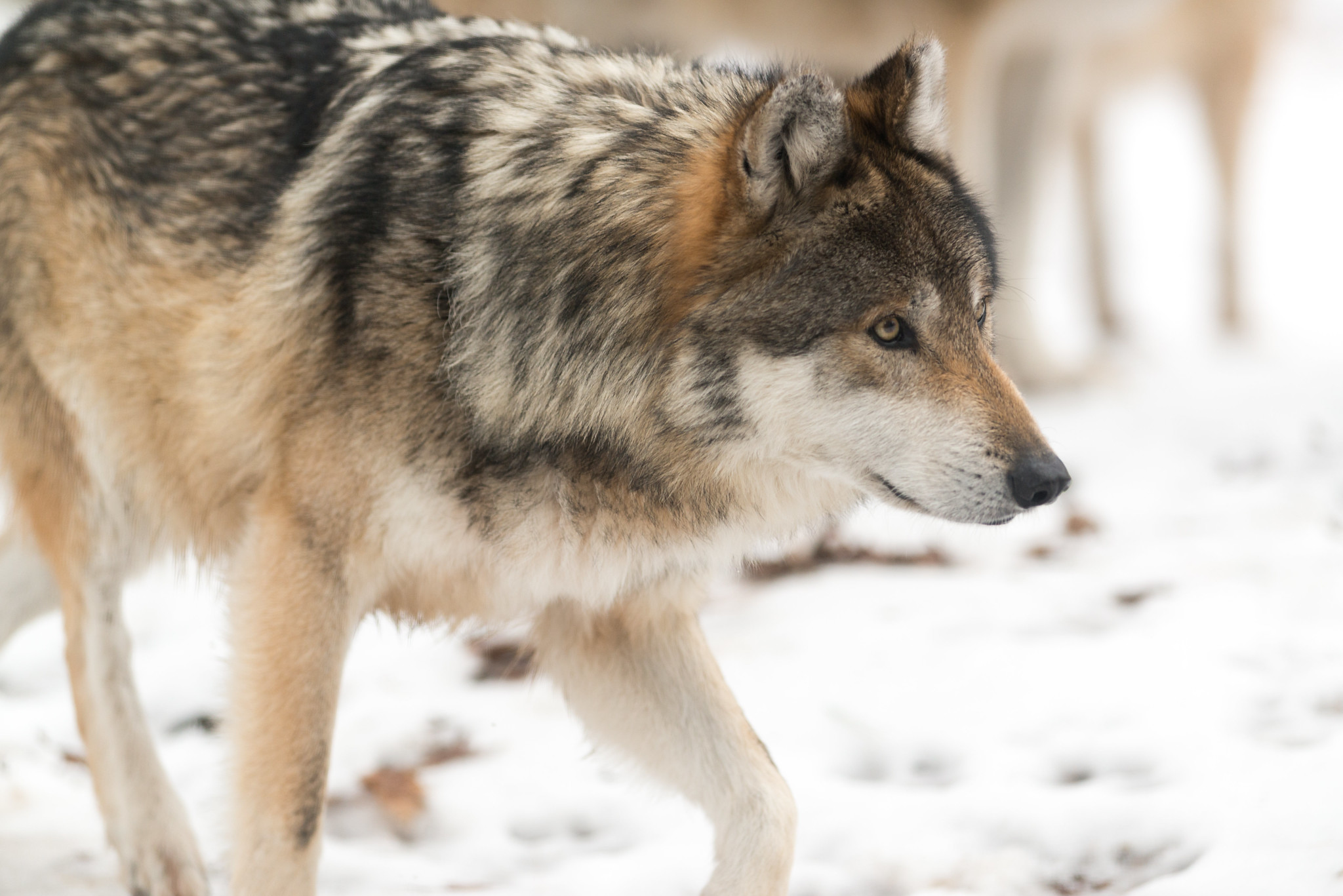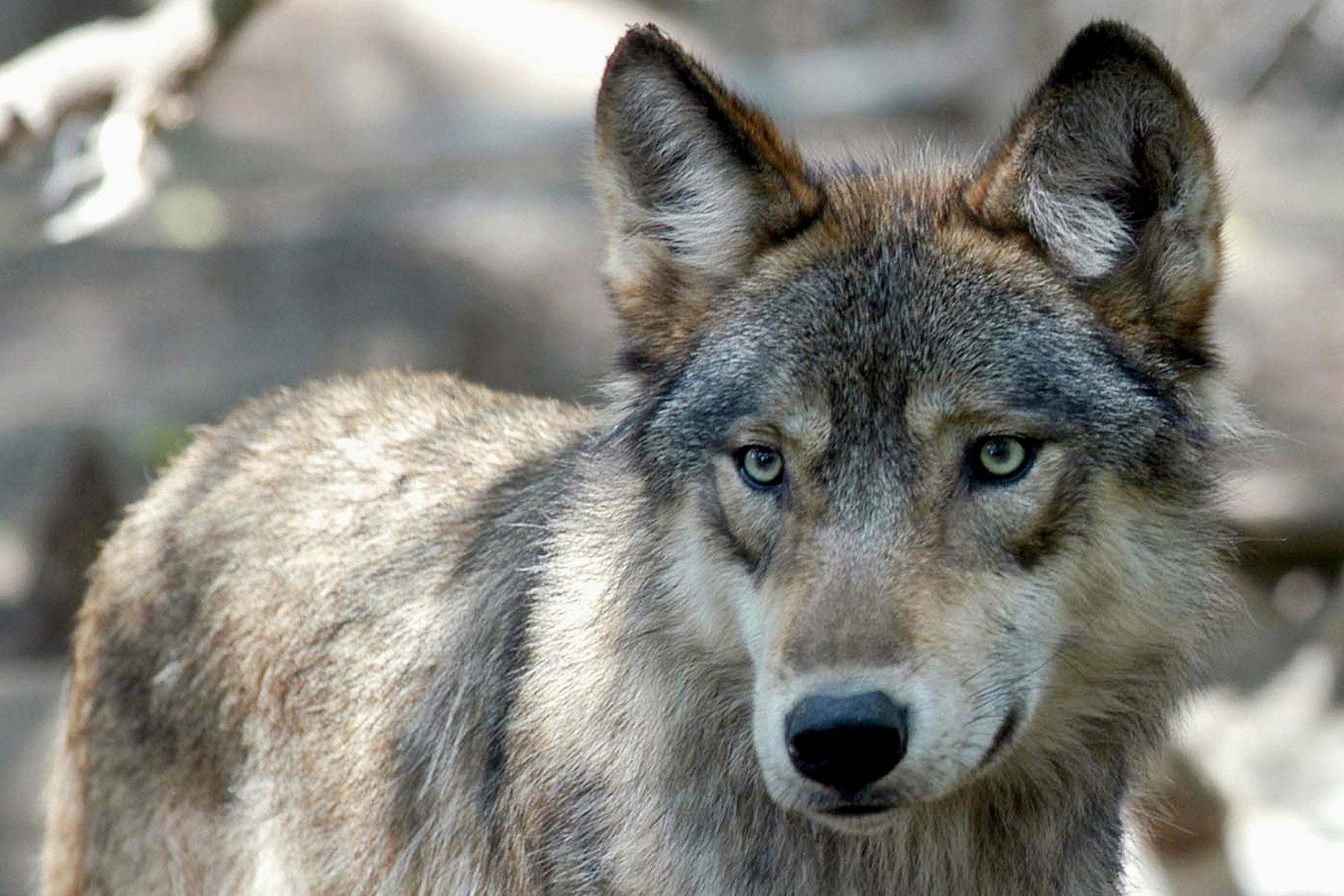GOP lawmakers say state wildlife regulators should set a statewide population goal for managing wolves in Wisconsin that provides clarity for a wolf hunt if the animal is delisted as an endangered species.
The DNR has been working on the first major update of its wolf management plan in more than two decades. The last plan approved in 1999 and revised in 2007 set a population goal of 350 wolves. When it was first written, Wisconsin had roughly 250 wolves. Since then, DNR data shows the animal’s population has grown four times that number to nearly 1,000 wolves and appears to be stabilizing.
State wildlife regulators nixed a population goal when the agency first released its draft plan last November. Republican lawmakers Sen. Rob Stafsholt, R-New Richmond, and Rep. Chanz Green, R-Grand View, authored a bill that would require the agency to include a statewide population goal in its plan. Last month, the agency released a revised draft of its wolf management plan that would seek to maintain the population at levels between 800 and 1,200 wolves.
News with a little more humanity
WPR’s “Wisconsin Today” newsletter keeps you connected to the state you love without feeling overwhelmed. No paywall. No agenda. No corporate filter.
Stafsholt said the plan should contain a numeric goal to remain consistent with prior versions.
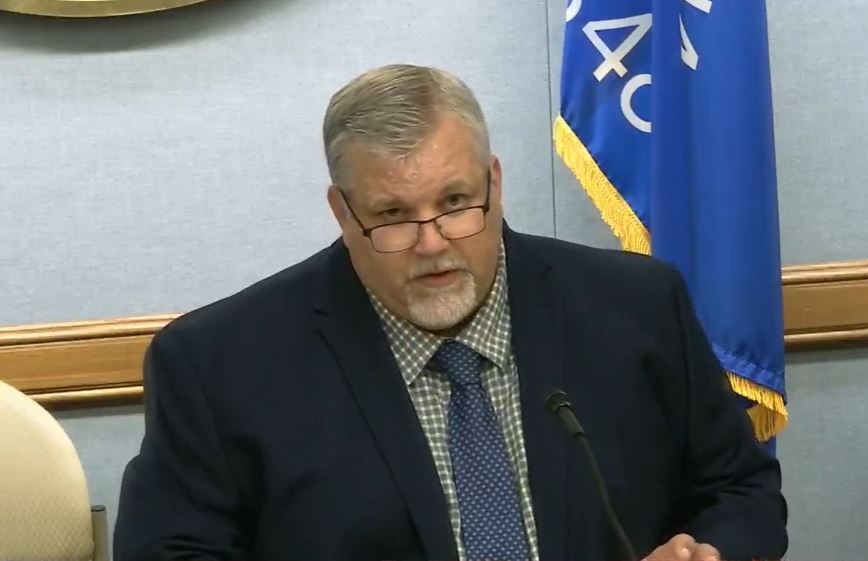
“This bill just requires that for the purpose of delisting and consistency that there is a population goal in there,” Stafsholt said.
Green added that other states like Idaho and Wyoming identify goals for managing their wolf populations.
State Sen. Mark Spreitzer, D-Beloit, pressed Stafsholt several times for his ideal population goal. The GOP lawmaker wouldn’t provide a figure, saying that should come from a separate process.
Spreitzer said the state should first focus on sustainable management of the wolf population if or when the animal is delisted.
“Let’s give it a try for a couple of years. If there’s problems, let’s look at legislation then,” Spreitzer said. “But let’s not jump the gun.”
Stafsholt said groups fear they won’t be able to harvest a certain number of wolves without a specific goal. State law mandates a hunting season when the wolf isn’t under federal protection.
DNR Large Carnivore Specialist Randy Johnson testified in opposition to the bill. He said a numeric goal may be appropriate for a recovering species, but often become ineffective. He also said it’s difficult to find an “appropriate” number that reflects the wide range of social preferences and biological considerations with a changing population. He added it would also fail to consider how wolves are spread out across the landscape.
“There are certain areas of the state that may have more wolves or fewer wolves and more conflict and less conflict,” Johnson said. “A single goal fails to address those dynamics.”
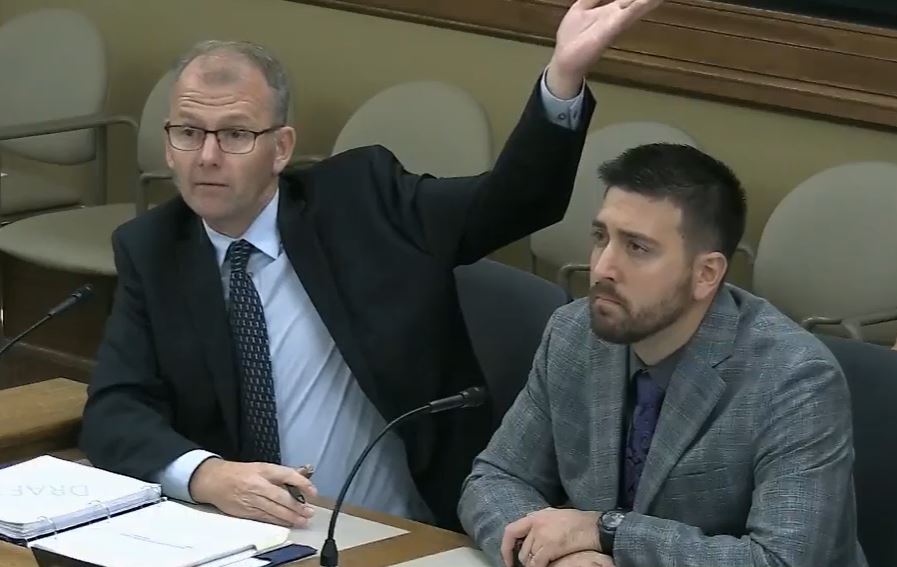
George Meyer, a former DNR Secretary, spoke on behalf of the Wisconsin Wildlife Federation. He said the agency’s plan will lead to disagreements as to when the wolf population is above, below or meeting the DNR’s objectives.
“The legislation should specify that the plan contain a numerical wolf population goal, reflecting a need to significantly reduce the adverse effects of wolf predation on farmers, other landowners and sports men and women,” Meyer said.
The current plan and its management goal were the subject of much debate before and after the 2021 wolf hunt. Following the animal’s delisting that year, hunters killed 218 wolves in under three days. They killed their share and Ojibwe tribes’ portion of a 200-wolf quota. A judge restored federal protections for the animal last year.
Hunters, farmers and Republican lawmakers have urged the DNR to set a statewide population goal of 350 wolves in line with the existing plan. They have pointed to that goal as justification for higher wolf harvests to decrease their numbers and reduce conflicts with livestock and dogs.
Tim Fiocchi, senior government relations director with the Wisconsin Farm Bureau Federation, urged lawmakers to change the bill to include a numeric goal of 350 wolves.
“The lack of a set numeric goal makes setting consistent zone harvest quotas virtually impossible,” Fiocchi said.
Hunting groups like Hunter Nation also encouraged the DNR to follow the goal in its current plan.
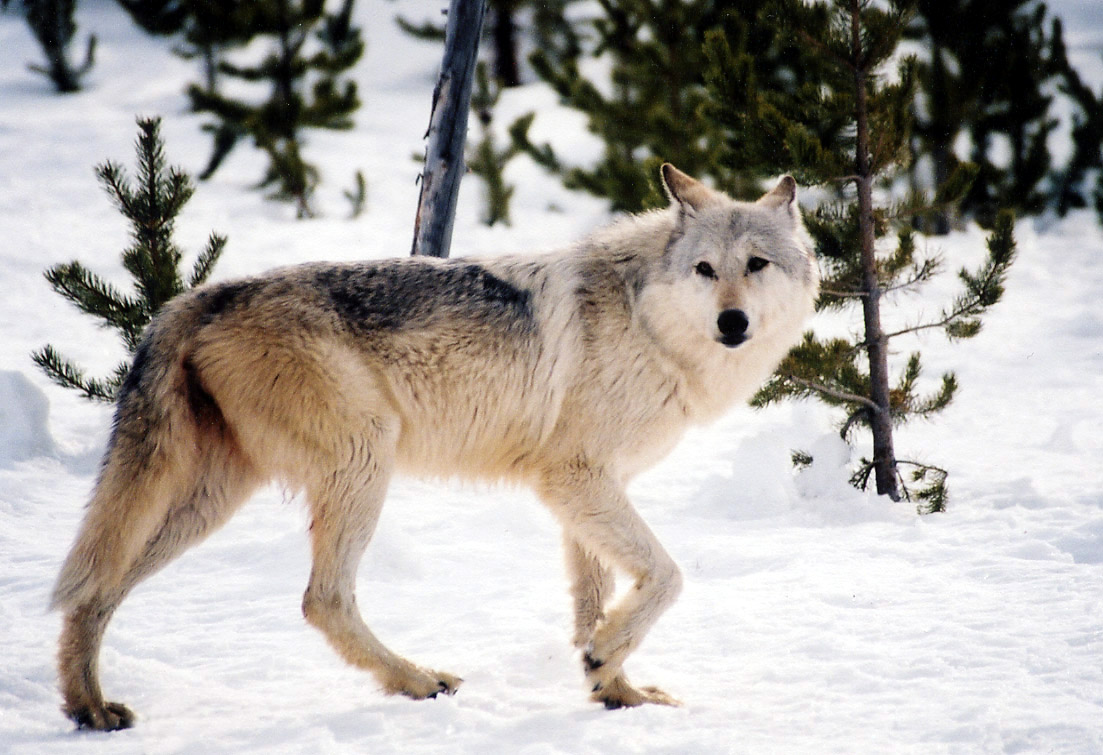
“We recommend the department strongly consider the real life experiences of those that live in wolf country,” said Chris Vaughn, the group’s Wisconsin state director. “The residents, stakeholders and their elected officials overwhelmingly support a defined wolf population goal.”
A 2022 survey by the DNR shows most Wisconsin households that responded support a population larger than 350 wolves, including in the wolf’s current range
Tribes, wolf advocates and conservation groups have criticized the existing wolf management plan as vastly outdated and not grounded in science. They argue the goal of 350 wolves was never intended to be a cap on the state’s wolf population. The Humane Society of the United States and Wisconsin Conservation Voters registered in opposition to the bill, but did not speak at Thursday’s hearing. Wisconsin’s Ojibwe tribes do not support a recreational wolf hunt.
Scott Pitta of Wisconsin Dells chairs the county deer advisory council in Adams County. He noted other species in Wisconsin like deer and bear do not have population goals.
“If we don’t need them for the other species, then why do we have to have one for this one?” Pitta said.
The DNR’s draft plan includes six updated wolf management zones that would set harvest quotas to maintain, grow or decrease wolves within those zones when the wolf isn’t under federal protection.
The plan also retains a proposal to reduce the time to register wolf kills from 24 hours to eight hours after harvest, as well as issue zone-specific tags. Dog training to hunt wolves would only be allowed when wolf seasons are held, and training would end in each zone as they’re closed to hunting.
While wolves are currently under federal protection, Democratic U.S. Sen. Tammy Baldwin and Republican U.S. Rep. Tom Tiffany have introduced and co-sponsored bills this year to delist the wolf as an endangered species, but they vary in details. Tiffany has highlighted wolf attacks on livestock in his support of efforts to delist the wolf.
DNR data shows a tiny fraction of the state’s more than 64,000 farms have been affected by wolf depredations.
According to the agency, the DNR had received 31 verified complaints of wolf depredations by the end of July this year, affecting 18 producers. While those figures have fluctuated since 2019, the agency has seen fewer than 50 verified attacks each year that have affected even fewer farmers. The number of wolf depredation complaints reported ranged from 50 to 107 complaints over the last five years.
The DNR will hold two open houses on the revised draft plan on Oct. 2 and 3 in Ashland and Marshfield. The plan requires approval from the Natural Resources Board, which will take it up at its Oct. 25 meeting. If passed, it would then go to the Legislature and governor for approval.
Wisconsin Public Radio, © Copyright 2026, Board of Regents of the University of Wisconsin System and Wisconsin Educational Communications Board.



